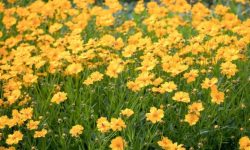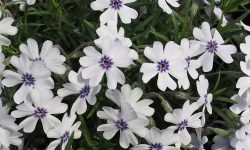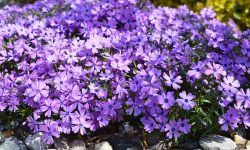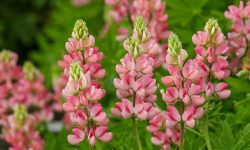There’s a kind of magic that happens when clematis takes hold in a garden. After planting, it begins an incredible transformation—from a fragile vine into a radiant display of star-like flowers that climb skyward with effortless grace. But this enchanting beauty doesn’t happen on its own. Clematis, like all remarkable things in nature, thrives when given thoughtful care, especially in the crucial days and weeks after planting.
This guide is your trusted companion in nurturing clematis from its earliest stage in your garden. Whether you’re a beginner hoping for your first bloom or a seasoned gardener seeking long-term vigor, you’ll find everything you need here to ensure your clematis not only survives but flourishes season after season. Let’s explore the proven methods and gentle routines that help your clematis settle in, grow strong, and reward you with spectacular flowers for years to come.
Understanding Clematis Needs After Planting
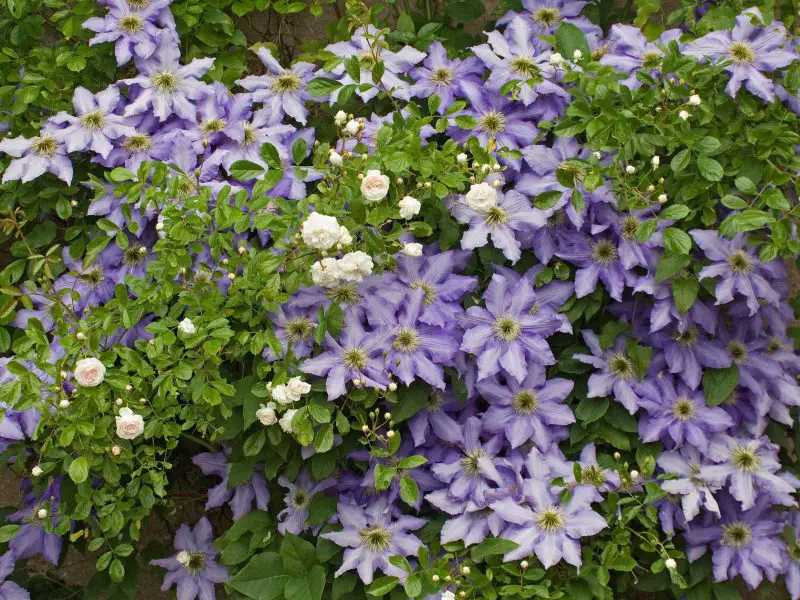
Why Post-Planting Care Is Crucial
Whether you’re growing a vigorous hybrid or a delicate heirloom, clematis enters a critical transition period right after planting. During this stage, its roots are not yet established, and the young stems are still vulnerable to environmental stress like heat, wind, inconsistent moisture, or excessive sun exposure. Without proper aftercare, the vine may struggle to grow, fail to bloom, or even suffer root damage.
This immediate care phase is more than just keeping the plant alive—it lays the foundation for years of healthy growth and stunning blooms. Attention to watering, light conditions, support structures, and feeding must be thoughtfully balanced to help the plant adjust smoothly and thrive in its new home.
How Clematis Adapts to Its New Environment
Once planted, clematis begins a gradual process of adapting to its surroundings. The young root system starts expanding, searching for moisture and nutrients in the soil, while the nodes along the stem prepare to push out new shoots. During this time, growth may appear slow, and some leaves may even wilt slightly—this is often normal as the plant shifts its energy below ground.
Clematis also needs time to orient itself toward the primary light source, adjust its water absorption rate, and respond to the texture, pH, and moisture level of the soil. Any sudden changes in environment—such as rapid drying, intense heat, or overwatering—can disrupt this adaptation. The key to success lies in creating steady, gentle conditions that support strong root establishment and healthy upward growth during its first weeks in the garden.
Watering Wisely for Root Establishment
Finding the Right Balance in Early Watering
In the first few weeks after planting, clematis needs consistent but not excessive moisture. Its young roots aren’t yet deep enough to access water far below the surface, so shallow, frequent watering won’t help long-term growth. Instead, water deeply two to three times per week, depending on weather and soil type. The topsoil should stay slightly moist, but not soggy.
Deep watering encourages roots to grow downward, making the plant stronger over time. Check moisture regularly by feeling the soil; adjust your schedule if rain or heat affects conditions.
Adapting Watering Practices Over Time
After the first month, watering can taper to once per week as roots develop. During hot spells, increase frequency to prevent stress. Adding mulch helps retain moisture and regulate soil temperature, but keep it away from the base of the stem to avoid rot.
Watch for signs of water stress, like wilting or yellowing. With consistent, well-timed watering, your clematis will establish a strong root system and grow vigorously through the season.
Sunlight and Shade: Getting the Balance Right
Understanding Clematis’s Light Preferences
Clematis loves the sun—but only to a point. Most varieties thrive with at least six hours of direct sunlight each day, which fuels healthy growth and abundant blooms. However, the plant’s base and roots prefer cooler, shaded conditions. This balance—sunny tops and shaded bottoms—is key to clematis success.
Too much direct heat at the base can stress the plant, dry out the soil quickly, and inhibit root growth. On the other hand, not enough sunlight on the upper vines can result in fewer flowers and leggy, weak stems.
How to Provide the Ideal Light Conditions
To protect the roots, plant low-growing companion plants around the base or use mulch to keep the soil cool. You can also place a decorative rock or small shrub nearby to offer natural shade. Just make sure it doesn’t block airflow or crowd the stem.
Position your clematis where it gets morning sun and some afternoon shade, especially in hot climates. In cooler regions, full sun is often ideal. Choose a location that matches your local conditions and the needs of the clematis variety you’re growing.
Striking the right sun-shade balance ensures strong flowering above ground and healthy, protected roots below—setting your clematis up for lasting success.
Feeding for Long-Term Vigor
Why Fertilizing Matters After Planting
Clematis are known for their stunning flowers, but those blooms require energy. After planting, your vine needs nutrients to develop a strong root system, sturdy stems, and future flower buds. While over-fertilizing can lead to excessive foliage and few flowers, thoughtful feeding ensures balanced growth and resilience.
Clematis planted in nutrient-rich soil may not need much fertilizer right away. However, in average or poor soil, a light feeding after a few weeks can help support healthy development. What matters most is timing and using the right type of fertilizer.
Choosing the Right Fertilizer and Schedule
About one month after planting, begin feeding with a balanced, slow-release fertilizer or a diluted liquid fertilizer high in phosphorus. This supports root growth and encourages the vine to settle in. Avoid high-nitrogen fertilizers early on, as they promote leafy growth over flowers.
As the growing season progresses, feeding every four to six weeks with a balanced fertilizer helps maintain vigor. In early summer, switching to a bloom-boosting formula with slightly higher phosphorus can enhance flowering.
Always water before and after feeding to prevent root burn. Avoid fertilizing late in the growing season—doing so can stimulate new growth that may be damaged by early frost.
Feeding clematis correctly doesn’t just keep it alive—it helps unlock its full flowering potential, year after year.
Training Clematis on Supports
Helping Your Clematis Climb Confidently
Clematis is a natural climber, but it needs help getting started. Unlike vines with tendrils or suction cups, clematis climbs by twining its leaf stems around supports. If there’s nothing to grasp, it can sprawl or sag. Training your vine early encourages upward growth and creates a cleaner, more beautiful display.
Install your trellis, arbor, fence, or obelisk before or during planting. Choose a structure that is narrow enough—about ½ inch in diameter—for clematis stems to grip. If the support is too wide or slick, the vine may struggle to latch on.
Early Guidance for Stronger Growth
In the first few weeks after planting, gently guide young stems toward the support. Use soft ties or garden twine to loosely secure the vine if needed. Avoid tying too tightly, as this can damage the stems or restrict growth.
As clematis grows, continue checking that new stems are climbing properly. Redirect or secure wandering vines so they don’t tangle or droop. Prune lightly if stems become overcrowded, encouraging air circulation and light penetration.
Training isn’t just about appearance—it also prevents stem breakage, promotes even flowering, and helps the plant grow into a more manageable, healthy shape. With early care, your clematis will quickly become a striking vertical feature in your garden.
Mulching and Weed Management
Why Mulching Matters After Planting
Mulch is more than just a finishing touch—it plays a vital role in clematis care after planting. By covering the soil surface, mulch helps retain moisture, regulates soil temperature, suppresses weed growth, and protects the shallow roots of newly planted vines. This is especially important during the plant’s first year, when it’s still establishing itself.
For clematis, keeping the root zone cool and evenly moist encourages healthy root expansion and reduces stress during hot or dry spells. Mulching also helps minimize competition from weeds, which can steal valuable nutrients and water.
Choosing and Applying the Right Mulch
Use organic mulch such as shredded bark, leaf mold, compost, or straw. Apply a layer about two to three inches thick around the base of the plant, keeping it a few inches away from the stem to prevent rot or fungal issues.
In addition to maintaining moisture, mulch also adds nutrients to the soil as it breaks down. Refresh the mulch each season, especially after heavy rains or strong winds that might shift or thin the layer.
Regularly inspect the mulched area for weeds. Pull them out by hand before they grow large, disturbing the soil as little as possible. Keeping the clematis’s base weed-free and insulated with mulch provides a cleaner, more stable growing environment and reduces maintenance over time.
With proper mulching and weed control, your clematis will thrive in a healthier, more protected space that supports long-term growth and abundant blooms.
Pruning for Health and Future Blooms
Understanding Why Pruning Matters
Pruning clematis after planting may feel intimidating, but it’s essential for building a strong, healthy plant. Proper pruning encourages new growth, improves airflow, shapes the vine, and enhances flower production. Skipping or incorrectly timing this step can lead to weak stems, tangled vines, and sparse blooms in future seasons.
For newly planted clematis, light pruning in the first year helps the plant focus on root development rather than excessive top growth. This early shaping sets the stage for fuller vines and better flowering later.
Know Your Clematis Group
Clematis varieties fall into three main pruning groups based on their bloom time:
Group 1 blooms early on old wood and requires minimal pruning, only to remove dead or tangled growth after flowering.
Group 2 flowers on both old and new wood, needing light pruning in early spring and deadheading after the first bloom flush.
Group 3 blooms on new wood and benefits from hard pruning each late winter or early spring, cutting stems back to 8–12 inches.
If you’re unsure which group your clematis belongs to, observe its flowering time or check the plant label.
Best Practices After Planting
In the first year, even for established varieties, cutting the vine back to about 12 inches after planting can encourage a bushier shape and stronger roots. Use clean, sharp pruners and cut just above healthy leaf buds. Remove damaged or weak stems, and train new growth onto your support.
Consistent annual pruning helps prevent overgrowth and improves flower production year after year. It’s not just about keeping clematis neat—it’s the key to unlocking their full blooming potential.
Watering Wisely Through the Seasons
Building Strong Roots Through Consistent Moisture
Watering is one of the most important elements of clematis care after planting. Inconsistent or improper watering can lead to stress, stunted growth, and poor flowering. Newly planted clematis vines need regular moisture to develop a deep, resilient root system that can support vigorous top growth and future blooms.
During the first growing season, consistent watering helps the plant transition from nursery pot to garden soil. The goal is to keep the soil evenly moist but never soggy, especially during dry spells or heatwaves.
Seasonal Watering Guidelines
In spring and early summer, check soil moisture frequently. Water deeply once or twice a week, depending on weather and soil type. Sandy soils may require more frequent watering, while heavy clay retains moisture longer.
In hot or dry weather, increase watering to prevent the soil from drying out, especially around the base. Early morning is the best time to water, allowing moisture to soak in before the heat of the day.
As autumn approaches and the plant enters dormancy, gradually reduce watering to avoid encouraging soft, frost-sensitive growth. Established clematis generally require less frequent watering, but even mature vines benefit from deep soaking during extended dry periods.
Use mulch to help retain moisture and reduce evaporation. Avoid watering the foliage directly, as wet leaves can invite disease. Instead, focus on watering at the soil level near the root zone.
With consistent, thoughtful watering, clematis can grow vigorously, resist stress, and reward your care with healthier vines and long-lasting blooms.
Seasonal Care Tips to Keep Clematis Healthy Year-Round
Spring: Encourage New Growth and Check for Winter Damage
As temperatures rise, inspect your clematis for signs of life. Look for swelling buds and trim away any dead or broken stems. Apply fresh mulch, topdress with compost, and begin regular watering as new growth appears. For established plants, this is also the ideal time to perform group-specific pruning if not done in late winter.
Fertilize with a balanced, slow-release formula to fuel healthy growth and prepare for flowering. Add a support structure early if needed so that new stems can climb without being disturbed later.
Summer: Manage Blooms, Water, and Pests
Summer is the season of reward—but it still requires attention. Deadhead faded blooms on Group 2 clematis to encourage repeat flowering. Monitor moisture levels closely and water deeply during dry spells. Be on the lookout for pests such as aphids, slugs, or spider mites, and treat promptly with safe, appropriate methods.
Support rapid growth by checking that vines are properly tied and trained. Keep the base shaded with mulch or companion plants to protect roots from heat stress.
Fall: Prepare for Dormancy
In early fall, allow the plant to slow down naturally. Avoid high-nitrogen fertilizers, which can stimulate soft growth vulnerable to frost. Instead, add a layer of compost or aged manure to nourish the roots through winter.
Trim lightly only if needed, and clean around the plant to remove fallen leaves or debris that may harbor disease.
Winter: Protect and Observe
Most clematis are hardy, but young or late-season varieties may benefit from winter protection. Add extra mulch around the base to insulate roots and prevent freeze-thaw cycles.
Avoid heavy pruning during this time, but do inspect for signs of rodent or weather damage. Clematis rests in winter but begins preparing underground for the next year’s growth.
Training Clematis on Trellises, Fences, and Arbors
Helping Clematis Find Its Climbing Path
Clematis is a natural climber, but it needs a bit of help to find and hold onto structures. Unlike ivy or vines with tendrils, clematis climbs by wrapping its leaf stems around narrow supports. Without the right guidance or structure, it may sprawl, tangle, or fail to thrive.
Install a support system—like a trellis, fence, arbor, or obelisk—at planting time or soon after. The ideal structure should have thin elements no thicker than a pencil, such as wires, twine, or wooden slats. Clematis won’t grab onto large poles or walls without added assistance.
Securing Vines for Better Growth
As your clematis begins to grow, gently guide the stems toward the support. Use soft garden ties or twine to loosely attach the stems until they begin climbing on their own. Be careful not to tie too tightly, as this can damage the delicate vines.
Check growth regularly during spring and early summer. Adjust ties and reposition stems if needed to create even coverage. Encouraging vertical growth early reduces tangling and keeps the plant healthy and well-shaped.
Choosing the Right Support for Your Garden
Match the structure to your clematis variety’s mature size and bloom style. Compact clematis works beautifully on smaller trellises or in containers with obelisks, while vigorous types thrive on large arbors, pergolas, or long fences.
A well-trained clematis not only climbs with confidence but also produces a more impressive and organized display of flowers. With just a little early effort, your clematis will reward you with elegance and color season after season.
Feeding Clematis for Stronger Growth and Bigger Blooms
Understanding Clematis Nutrient Needs
Clematis is a heavy feeder, especially during the growing and blooming seasons. To perform at its best, it requires a steady supply of nutrients that support root health, leaf production, and prolific flowering. Poor soil or a lack of fertilization can result in weak growth, fewer blooms, or pale foliage.
Fertilizing at the right time and with the right product gives your clematis the boost it needs to establish quickly and develop into a robust, long-lasting vine.
What and When to Feed
Start feeding clematis in early spring when new growth appears. Apply a slow-release, balanced fertilizer—such as a 10-10-10 or 5-10-5 blend—or one designed specifically for flowering vines. Organic options like compost tea, well-rotted manure, or fish emulsion also work well and improve soil health over time.
As the season progresses, switch to a bloom-boosting fertilizer higher in phosphorus (middle number) to encourage bud formation and flower production. Feed monthly during the active growing period, especially for larger or more mature vines.
Stop fertilizing in late summer to allow the plant to prepare for dormancy naturally. Late feeding can lead to soft growth that is more susceptible to frost and winter injury.
Tips for Successful Fertilizing
Always water the plant before and after fertilizing to prevent root burn. Apply fertilizer around the base of the plant, avoiding direct contact with stems. Combine feeding with mulching to retain moisture and slowly release nutrients into the soil.
Overfeeding is just as harmful as underfeeding, so avoid excessive doses. Watch your plant’s response—vigorous growth and deep green leaves indicate a healthy balance, while yellowing or poor blooming may signal a need to adjust your fertilizing routine.
Feeding clematis thoughtfully ensures not only healthy foliage but also abundant, show-stopping blooms year after year.
Pruning Strategies Based on Clematis Type
Why Pruning Matters
Pruning clematis properly is essential to encourage blooming, maintain shape, and remove dead or weak stems. The key to successful pruning lies in knowing which pruning group your clematis belongs to—each group has different bloom habits and timing. Without this knowledge, pruning at the wrong time could reduce or eliminate blooms for the year.
Understanding the Three Clematis Pruning Groups
Group 1 (Spring Bloomers): These clematis bloom on old wood from the previous year. Prune lightly, if at all, right after flowering in late spring or early summer. Only remove dead or tangled growth to maintain shape, as heavy pruning will cut off next season’s flower buds.
Group 2 (Repeat Bloomers): These produce flowers on both old and new wood. Prune lightly in early spring to remove dead stems and shape the plant. After the first flush of blooms, a light trim can encourage a second round of flowering in late summer. Avoid cutting too aggressively or you’ll lose early-season blooms.
Group 3 (Summer/Fall Bloomers): These clematis bloom only on new growth. Prune back hard in late winter or early spring to about 12–18 inches above the ground. This type benefits from aggressive pruning, which encourages vigorous new shoots and plenty of flowers during the growing season.
General Pruning Tips
Always use clean, sharp tools to avoid damaging the vine or introducing disease. Remove dead or weak stems first, then focus on shaping the plant. Don’t worry if pruning feels intimidating—clematis are resilient and often bounce back even from mistakes.
If you’re unsure which group your plant belongs to, observe when it blooms. Clematis that flower before June are usually Group 1 or 2, while those that bloom later are likely Group 3.
Pruning correctly not only maximizes blooms but also keeps your clematis healthier, better shaped, and more vigorous over time.
Watering Techniques to Prevent Stress and Disease
Meeting Clematis’ Watering Needs
Clematis prefers consistent moisture, especially during its first year of growth. Although it dislikes soggy roots, it will not thrive in dry soil either. The goal is to keep the soil evenly moist—not too wet, not too dry—to support strong root development and steady growth.
During hot spells or windy conditions, the plant may dry out more quickly, so it’s important to monitor soil moisture regularly and adjust your watering schedule accordingly.
Best Practices for Watering Clematis
Water deeply rather than frequently. A thorough soaking once or twice a week is more beneficial than shallow, daily watering. Deep watering encourages roots to grow downward, making the plant more drought-tolerant in the long run.
Apply water directly to the base of the plant to avoid wetting the foliage, which can lead to fungal diseases like powdery mildew or wilt. Soaker hoses or drip irrigation systems work especially well, delivering moisture right where it’s needed while keeping leaves dry.
Mulching around the base of the clematis helps regulate soil temperature and retain moisture. Use organic mulch such as shredded bark, compost, or leaf mold, and keep it a few inches away from the crown to prevent rot.
Signs of Overwatering or Underwatering
Wilting, yellowing leaves, or stunted growth can be signs of inconsistent watering. If the soil feels soggy or smells sour, your clematis may be overwatered. On the other hand, dry, brittle stems or scorched leaf edges suggest underwatering.
Adjusting your watering routine based on weather conditions, soil type, and plant size helps maintain a healthy, thriving clematis and prevents many common issues caused by water stress.
Seasonal Care Through Fall and Winter
Preparing Clematis for Colder Months
As the growing season winds down in late summer and early fall, clematis begins to enter dormancy. To help your plant transition smoothly, reduce watering gradually, allowing the soil to dry slightly between waterings. This encourages the vine to slow down naturally and conserve energy for winter.
Clear away dead leaves and faded blooms to reduce the risk of pests and disease overwintering in plant debris. However, avoid aggressive pruning unless your clematis belongs to Group 3, which benefits from a hard cutback in late winter or early spring.
Mulching and Protecting the Roots
Apply a thick layer of mulch—around 3 to 4 inches—over the root zone once the ground starts to cool in late autumn. This insulating layer protects the roots from freezing temperatures and sudden thaw/freeze cycles. Organic mulch such as straw, pine needles, or shredded leaves works best.
If your region experiences severe winters, consider covering the base of the plant with additional protection, such as a frost blanket or overturned pot, especially for young clematis or newly planted ones.
What to Expect in Winter
Clematis is hardy and well-adapted to dormancy. Above-ground growth may die back or look completely lifeless, but the root system remains alive beneath the surface. Avoid the temptation to dig or disturb the soil during winter, and be patient. Come spring, fresh shoots will emerge from the crown if the plant has been well cared for.
With proper seasonal care, your clematis will emerge healthier and stronger, ready to produce another stunning display of blooms when the growing season returns.
Supporting and Training Clematis for Optimal Shape
Why Clematis Needs Support
Clematis is a climbing vine that naturally seeks vertical structures to wrap around and grow upward. Without support, it will sprawl along the ground, increasing its risk of damage, disease, and tangled growth. Providing a sturdy structure not only supports healthy development but also showcases the plant’s stunning flowers at eye level.
Choosing the Right Support Structure
Clematis can climb on trellises, obelisks, arches, pergolas, fences, and even shrubs or small trees. Whichever you choose, ensure the structure is strong enough to support mature vines, which can become quite heavy over time. For best results, install the support at planting time or as early as possible to avoid disturbing the roots later.
Structures with narrow elements—such as wire, twine, or thin slats—are ideal since clematis climbs by wrapping its leaf stems around nearby supports. Wide posts or flat walls won’t provide a good grip, so if using a fence or wall, add netting or wire mesh to give the plant something to hold onto.
How to Train Your Clematis
As new growth appears, gently guide the vines toward the support. You can use soft ties, plant clips, or string to secure stems loosely in place. Be careful not to tie too tightly, which can cut into the stems and restrict growth.
Continue monitoring the plant throughout the growing season. As new vines develop, encourage them to climb evenly by spacing and redirecting stems. This helps the clematis fill out its structure attractively and prevents a tangled or top-heavy appearance.
Training takes some patience, especially in the first year, but with time, the clematis will learn to follow the structure on its own. Once established, it will reward you with a vertical cascade of color and elegance.
Feeding Your Clematis for Sustained Growth
The Importance of Proper Nutrition
Clematis is a vigorous bloomer, and to support its lush foliage and prolific flowering, it needs regular feeding throughout the growing season. Without enough nutrients, clematis may produce weak stems, small blooms, or fail to flower at all. Feeding helps maintain overall plant vigor and ensures consistent performance year after year.
When and What to Feed
Begin feeding your clematis in early spring, just as new growth emerges. Use a balanced, slow-release fertilizer or a water-soluble option with equal parts nitrogen, phosphorus, and potassium. A 10-10-10 or 20-20-20 blend works well in early spring to promote strong leaf and root development.
Once buds begin to form, switch to a bloom-boosting fertilizer that is lower in nitrogen and higher in phosphorus and potassium, such as a 5-10-10 blend. This encourages vibrant, abundant flowers while preventing excessive leafy growth at the expense of blooms.
Feed monthly during the active growing season—typically from spring through midsummer. Avoid fertilizing late in the season, as it can encourage tender new growth that may be damaged by fall frost.
Feeding Tips for Maximum Effect
Always water the plant before applying fertilizer to prevent root burn. Spread granular fertilizer evenly around the base of the plant and gently work it into the top layer of soil, or use a diluted liquid feed directly at the roots.
Organic options like compost tea, fish emulsion, or well-aged compost are excellent alternatives, especially if you prefer a natural approach. These not only nourish the plant but also improve soil structure and microbial activity.
By feeding regularly and adjusting your fertilizer based on growth stages, you’ll give your clematis the energy it needs to bloom beautifully throughout the season.
Recognizing and Managing Common Pests and Diseases
Spotting Early Signs of Trouble
Even though clematis is generally a hardy and resilient plant, it can still be vulnerable to certain pests and diseases—especially in humid or poorly ventilated areas. Catching early warning signs is key to preventing larger outbreaks that could hinder growth or diminish blooms.
Watch for yellowing leaves, sudden wilting, discolored stems, black spots, webbing, or visible insects. These signs usually indicate stress caused by fungal infection, insect activity, or improper growing conditions.
Common Clematis Pests
Aphids are a frequent nuisance on young shoots and buds, sucking sap and weakening the plant. You might notice sticky residue or clusters of small insects on the stems. Spider mites can also appear in hot, dry weather, leaving behind fine webbing and speckled leaves.
To control them, spray the plant with a strong stream of water to dislodge pests or apply insecticidal soap or neem oil. Regularly inspect new growth and treat infestations early before they spread.
Slugs and snails may chew on young stems, especially at the base. Protect the plant with copper tape, crushed eggshells, or organic slug bait if needed.
Common Clematis Diseases
Clematis wilt is perhaps the most well-known disease. It causes sudden collapse of stems and leaves, often without warning. This is caused by a fungal infection entering through damaged tissue. If it strikes, prune affected stems back to healthy growth and disinfect your tools.
Powdery mildew appears as a white, powdery coating on leaves, especially in dry, shady, or crowded conditions. Improve air circulation and treat with fungicides if necessary.
Root rot and crown rot may occur in soggy or poorly drained soil. Avoid overwatering and ensure excellent drainage during planting to reduce the risk.
Prevention Through Good Care
The best defense against pests and diseases is strong, healthy growth. Plant your clematis in the right spot, water at the base to keep foliage dry, space it well for airflow, and feed it consistently. Regular inspection and prompt response to problems will keep your vine healthy and vigorous year after year.
Pruning Strategies for Long-Term Success
Why Pruning Matters
Pruning is essential for maintaining a healthy, vibrant clematis. It encourages strong growth, prevents disease, and stimulates abundant flowering year after year. Knowing when and how to prune ensures that your clematis doesn’t become tangled, overgrown, or flowerless. Each type of clematis has its own pruning needs, so understanding your variety is the first step toward successful care.
Understanding Clematis Pruning Groups
Clematis are divided into three main pruning groups based on their blooming habits:
Group 1 blooms in early spring on old wood. These clematis, like ‘Montana’ and ‘Armandii’, should be pruned lightly right after flowering to shape the plant and remove any dead or damaged stems. Avoid cutting too late in the season or you may remove next year’s flower buds.
Group 2 includes varieties that bloom in late spring or early summer on both old and new wood. They benefit from light pruning in early spring to remove weak growth and encourage new shoots. After the first flush of blooms, you can lightly trim again to tidy the plant and promote a second wave of flowers.
Group 3 clematis bloom on new growth in late summer to fall. These are the easiest to manage—cut them back hard in late winter or early spring, leaving only 12 to 18 inches of stem above ground. This stimulates fresh shoots that will bear flowers later in the season.
General Pruning Tips
Use clean, sharp tools to make smooth cuts and reduce the risk of disease. Always remove dead, weak, or tangled stems, and step back often to assess the shape and airflow of the plant. If you’re unsure of the variety, wait to see when and where it blooms before making any major cuts.
Regular pruning not only improves flowering but also keeps your clematis looking tidy and manageable as it matures. With the right timing and a gentle touch, pruning becomes a powerful tool for maintaining long-term success in your clematis care.
Frequently Asked Questions About Caring For Clematis
How often should I water my clematis after planting?
During the first growing season, clematis needs deep and consistent watering about two to three times a week. This helps establish a strong root system. Make sure the soil remains evenly moist but not waterlogged. After the plant is established, you can reduce watering slightly but continue to monitor the soil, especially during hot or dry spells. Mulching around the base will help retain moisture and keep the roots cool.
Does clematis need fertilizer after planting?
Yes, clematis benefits from regular feeding once new growth begins. Use a balanced, slow-release fertilizer in early spring, followed by a monthly dose of a phosphorus-rich fertilizer to encourage blooming. Avoid high-nitrogen formulas, which promote leafy growth at the expense of flowers. Stop fertilizing in late summer to allow the plant to wind down naturally before winter.
How can I protect clematis from pests and diseases?
New clematis vines are sensitive to slugs, aphids, and fungal issues like clematis wilt. Keep the base area clean and use slug barriers or organic deterrents. Check for aphids and treat them with insecticidal soap if needed. Always water at the base to avoid wetting the leaves. If clematis wilt appears, cut affected stems back to healthy growth. Most plants recover well and regrow from the base.
When should I start pruning clematis?
Pruning depends on the variety. Early bloomers (Group 1) should be pruned after flowering in spring. Varieties that bloom in late spring and early summer (Group 2) need light pruning in early spring and again after flowering. Late-flowering types (Group 3) can be pruned hard in late winter or early spring. If you’re unsure of your group, wait until it blooms, then adjust your pruning method accordingly.
What kind of support does clematis need?
Clematis climbs by wrapping its leaf stems around thin supports. Provide a trellis, arbor, or mesh structure at planting time to avoid disturbing the roots later. Thin wires, stakes, or netting are ideal. In the early stages, gently guide new shoots toward the support and secure them loosely with soft garden ties if necessary.
Conclusion: Let Your Clematis Thrive and Shine
Clematis is more than a beautiful vine—it’s a garden centerpiece that grows more stunning with each passing year when cared for properly. After planting, your ongoing attention to watering, feeding, pruning, and support will shape its success. By understanding its needs and responding with consistent care, you’ll enjoy a dazzling display of flowers that climb, bloom, and brighten your space season after season. With a little effort and the right approach, your clematis will reward you with lasting beauty and vibrant life in the garden.


